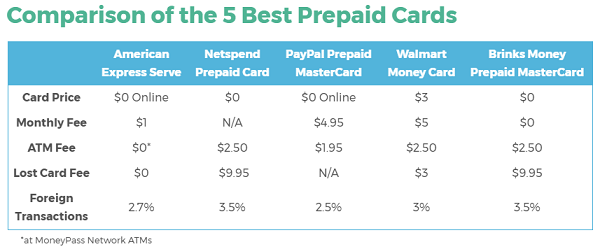How Does Your Prepaid Card Rank?
![]() Two reports ranking U.S. consumer prepaid cards were released in August. Find out which cards made the lists and why.
Two reports ranking U.S. consumer prepaid cards were released in August. Find out which cards made the lists and why.
WalletHub published its 2017 Prepaid Cards Report on Aug. 31 after its editors evaluated 39 of the most popular prepaid cards on the market. Cards were compared based on four hypothetical scenarios designed to reflect common usage habits, according to the authors.
American Express’ Bluebird product was No. 1, but Serve by American Express also made the list of best cards. The rankings come on the heels of Amex’s announcement that InComm is buying the Serve platform and will take over all program management and distribution functions for American Express prepaid cards. Although InComm says “it will do right by the customers,” it’s unclear whether the fee structures on the products will remain the same.
H&R Block’s Emerald Card and Kaiku Visa Prepaid Card also were recognized as being the best alternative to check cashing and having the fewest fees, respectively. Serve was listed as the best alternative checking account, while Bluebird also received high marks as a tool for disbursing children’s allowances and providing access to electronic transactions. Green Dot’s Gold Card and its NASCAR prepaid card were also listed among the best prepaid cards.
Overall, the report found that prepaid cards are up to 82 percent cheaper when offered by large banks, which is interesting given that big bank products didn’t make the list of top cards. WalletHub also found that prepaid cards had far fewer fees than checking accounts, but said 49 percent of prepaid cards “may not be suitable for common consumer needs, due to a lack of necessary features.”

Source: LendEDU
In another report, LendEDU, a marketplace for student loans and student loan refinance, named the five best prepaid cards as: American Express Serve, Netspend Prepaid Card, PayPal Prepaid MasterCard, Walmart MoneyCard and Brinks Money Prepaid MasterCard. The article doesn’t explain how the products were selected, but it appears to be based on the mix of features and fees (see table above). It also offers advice on choosing a card based on how you plan to use it.
Related stories:











































